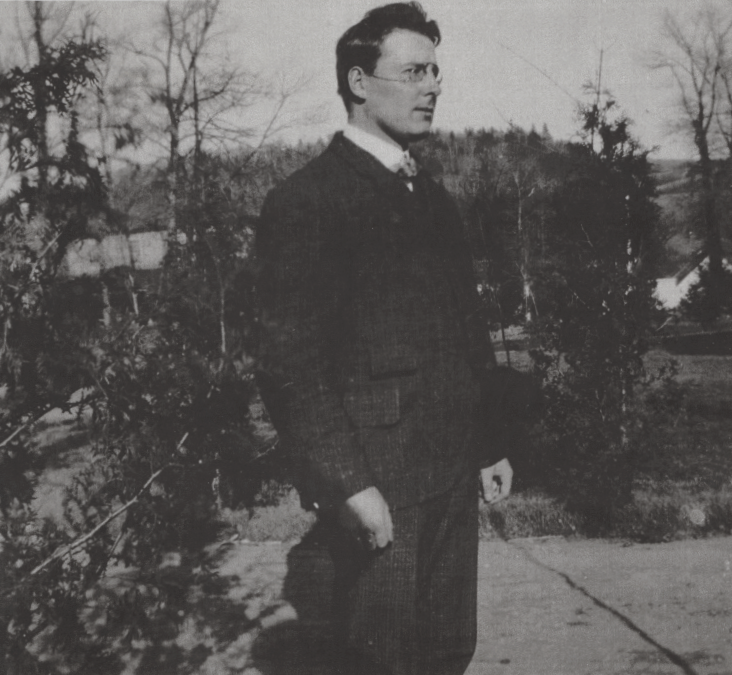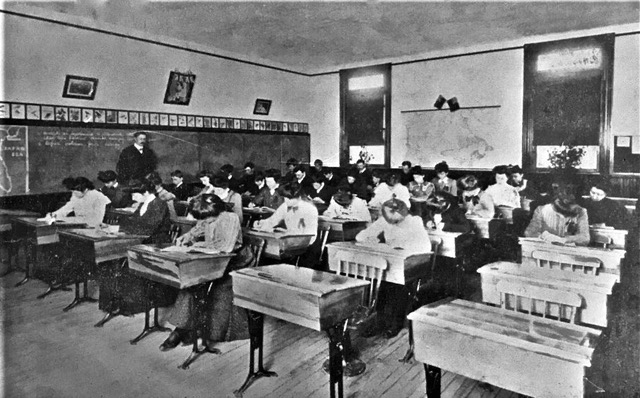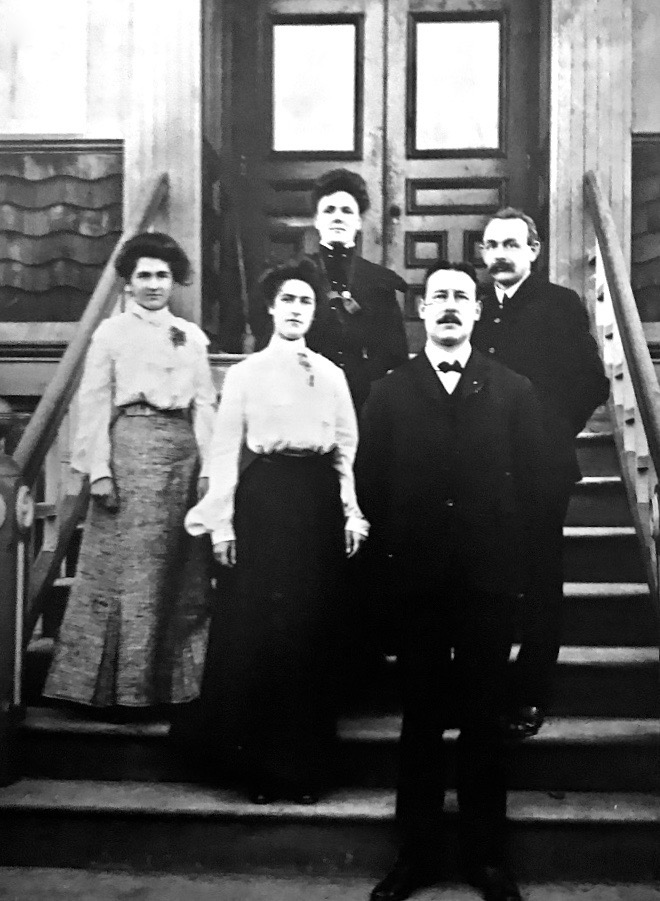Model teachers for a model school
Macdonald and Robertson want highly educated teachers for their school. They will pay well. The principal receives an annual salary of $1000. Other teachers are paid twice what a one-room school teacher normally receives.
To ensure discipline Robertson insists that the principal be a man. He chooses University of New Brunswick (UNB) graduate David Wiley Hamilton (D.W.) to lead the school in Kingston. In preparation for his new role as instructor of Nature and Gardening, D.W. is sent to the University of Chicago and Cornell University. D.W. also teaches the ‘Advanced’ Class ( grades 8-9-10-11) with students ranging in age from 13 to 23. He was assisted by C.M. Kelly.
UNB graduate Miss Ina Mersereau is in charge of the ‘2nd Intermediate’ class (grades 6 & 7) where the 50 students range in age from 11 to 22. She was assisted by Bessie A. Holder and Mary E. Sterrett.
Another UNB graduate, Mr. C.M. Kelly becomes the first Manual Training teacher. Initially, he is also put in charge or the ‘1st Intermediate’ class (grades 3-4-5) where the youngest student is 8 and the eldest is 18. Before long, it becomes obvious that this situation does not allow enough time to dedicate to the Manual Training course. Miss Annie Darling, is then hired to take charge of the ‘1st Intermediate’ students. Mr. Kelly assists her.
Miss Margaret Stewart, a graduate of Saint John High School, is the primary class (grades 1 & 2) teacher. She is assisted by Mary E. Stewart. The students are from 6 to 10 years of age.
Finding a qualified teacher for the Domestic Science course proves difficult. New Brunswick’s first Teacher Training School for Domestic Science opens in September 1904 at Mount Allison University. To register one must have a first class teaching license and teaching experience. In May 1905, Miss Bessie Young finishes at the top of the first graduating class. She is highly recommended by Kingston native and School Superintendent W.S. Carter. She is hired to start the program in June with only one month left in the school year.
After teachers’ salaries, the school’s largest expense is the cost of transporting students from outlying districts to MCS. We look at how that is accomplished next.




